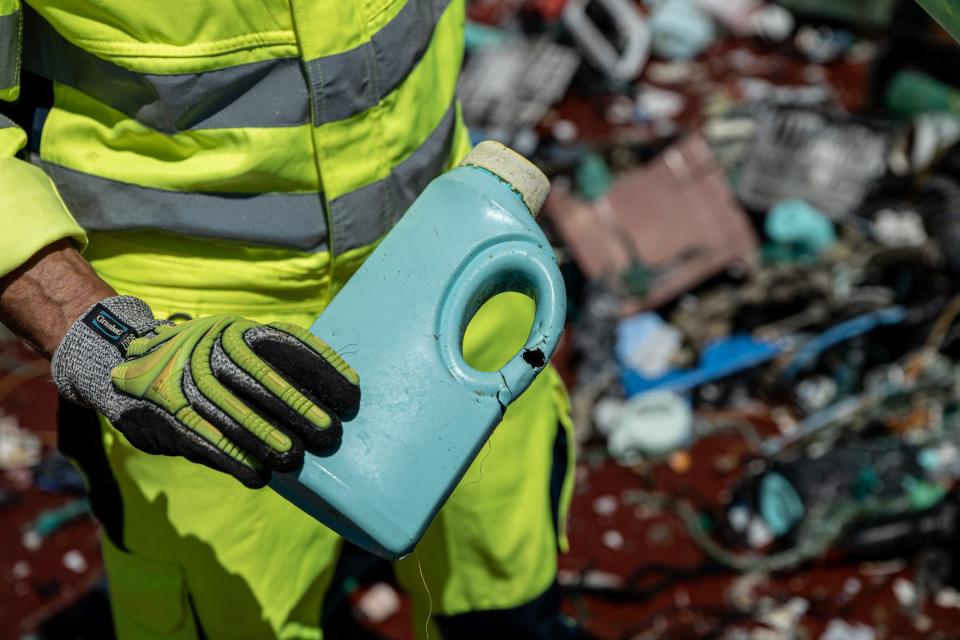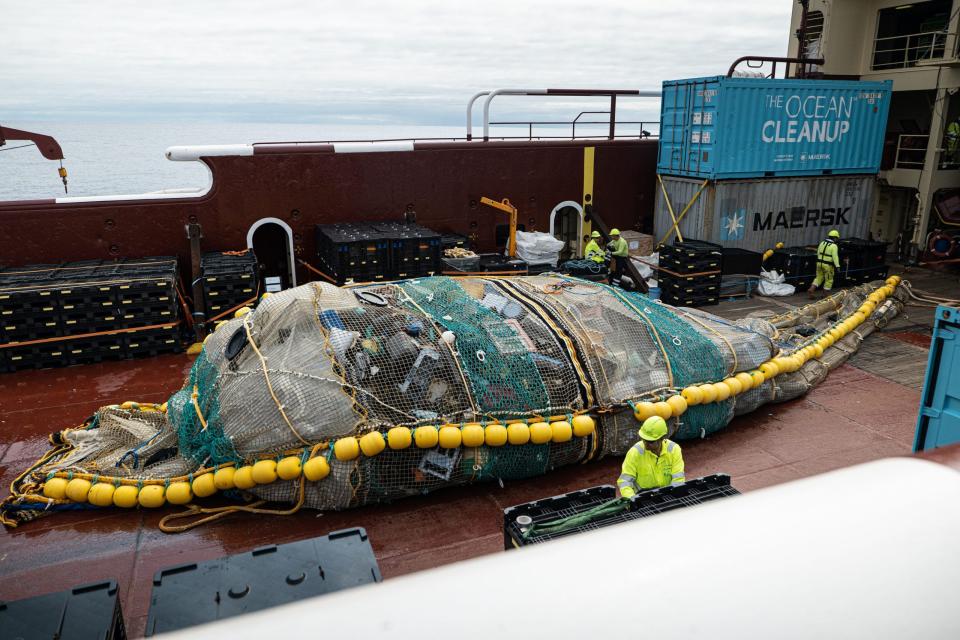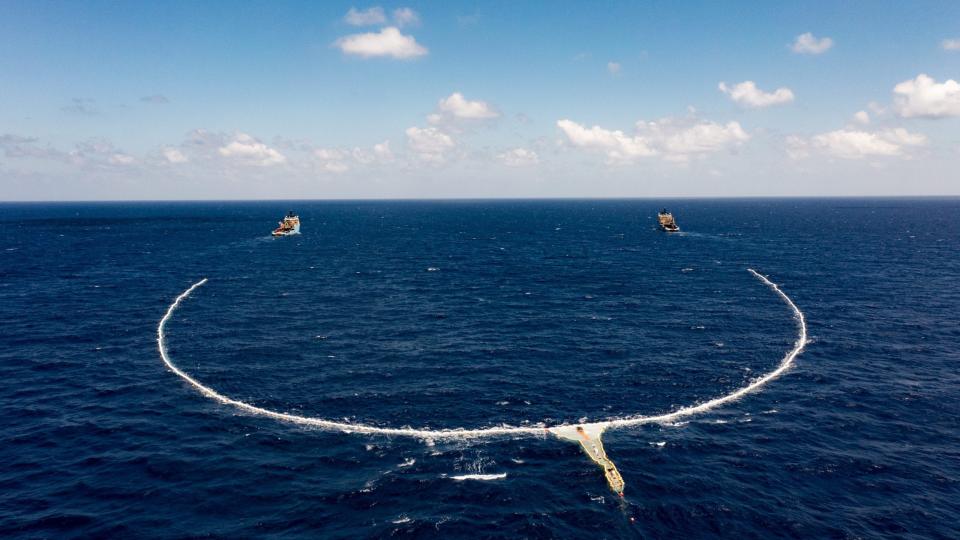A half-mile plastic-trapping device in the Pacific caught 64,000 pounds of trash - including a fridge, mannequin, and toilet seats
- Oops!Something went wrong.Please try again later.
The Ocean Cleanup, a nonprofit organization, launched a device into the Pacific Ocean to remove plastic.
The device brought back 64,000 pounds of trash in two-and-a-half months.
The organization found a mannequin, refrigerator, and toilet seats among the debris.
In the middle of the Pacific Ocean, around 1,200 miles from shore, sits a giant vortex of trash known as the Great Pacific Garbage Patch. The site is home to more than 1.8 trillion pieces of plastic - the largest accumulation of ocean plastic in the world.
Over the summer, a nonprofit organization called The Ocean Cleanup ventured into the patch to test out a new device it had built. In essence, it's an artificial floating coastline that catches plastic in its fold like a giant arm, then channels it into an attached funnel-shaped net. Two vessels tow the entire contraption through the water at about 1.5 knots (slower than normal walking speed) - enough for the ocean current to push floating garbage into the net. Once that net fills with plastic (every few weeks or so), a crew hauls it up out of the water and empties the garbage onto one of the vessels.
The device, which the group calls "Jenny," recently collected nearly 64,000 pounds of plastic over the span of two-and-a-half months. Then a crew hauled it to shore for recycling.
The team found some strange items among the debris, including a mannequin, refrigerator, and toilet seats.
"Toilet seats are very, very common at the Great Pacific Garbage Patch," the organization's founder, Boyan Slat, said at a press conference on Wednesday.
He called the patch a modern-day archaeological site.
"Most of the stuff we collect is fishing gear - that has the highest probability of actually making out to the garbage patch to last there," Slat said. "So you see a lot of buoys and crates and nets, but we also see some stuff that clearly comes from land. We see things like toothbrushes. You see handles of umbrellas. We see toys."

The garbage patch is accumulating plastic over time as more enters the ocean from storm drains, canals, or rivers. Wind can also carry trash from landfills or garbage bins toward the ocean.
The Ocean Cleanup has built a fleet of catamarans to remove plastic from rivers before it reaches the ocean, but Jenny is its flagship invention. It's the first device that has proven capable of cleaning the garbage patch - an ambition many scientists previously deemed impossible.
Starting Thursday, The Ocean Cleanup announced, it plans to start removing plastic from the garbage patch routinely, rather than as part of a technology test, as it had done thus far. Slat estimated that 95% of the plastic items Jenny catches can be recycled. The organization hopes to partner with consumer brands to turn the trash into recycled products, then funnel proceeds back into the cleanup efforts.
The Ocean Cleanup came close to failure

The Ocean Cleanup has set itself an ambitious goal to remove 90% of floating ocean plastic by 2040. But until recently, it struggled to develop a device that could actually make headway on that.
The organization launched its first attempt at a plastic-catching device in 2018, after five years of research, but the prototype broke in the water. A newer model, released in 2019, did a better job of collecting plastic, but The Ocean Cleanup estimated that it would need hundreds of those devices to clean the world's oceans.
So scientists and engineers began to question whether the group could deliver on the tens of millions of dollars it had acquired in funding.
"From the very beginning we had a lot of doubters and, honestly, I think they were kind of right about that because we really didn't know what we were doing those first years," Slat said on Wednesday. "Honestly, I, too, doubted many times whether we would ever make it, ever get to this point. We had so many close calls. We almost ran out of money a few times. We had these tests that kept failing."

Jenny, however, showed promise almost as soon as the device entered the water. During its first two-hour test, it collected 220 pounds of plastic. Slat said he started to feel optimistic after the third test, when his team texted him a picture of a mountain of plastic Jenny had captured.
"I still get goosebumps just thinking back about that moment," he said. "I don't think I've ever been happier."
At peak performance, Slat added, Jenny could probably collect around 4,400 pounds of plastic per day. But there are 220 million pounds of plastic in the Great Pacific Garbage Patch. So The Ocean Cleanup estimates that it would need about 10 Jennys to clean up 50% of the patch in five years.
Slat acknowledged that his team has only made a tiny dent so far - but it's progress, he said.
"It's really hard to imagine that all that stuff just used to float out there in the middle of the ocean, 2,000 kilometers offshore," Slat said. "It still would have floated out there 10 years from now, 50 years from now, probably even 100 years from now. This stuff is so persistent."
Read the original article on Business Insider

